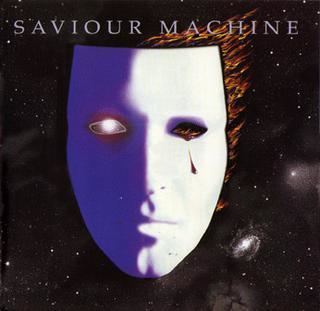Released 19931996 (reissue) | Length 69:44 Release date 1993 | |
 | ||
Recorded 1993 The Geen Room and The Mixing Lab Similar Legend III:I, Rarities/Revelations, Live in Deutschland 2002, Fall Babylon Fall, Exhumed of the Earth | ||
Saviour Machine I is the 1993 debut album of the American metal band Saviour Machine. In 2010, HM Magazine ranked it #72 on the Top 100 Christian metal albums of all time list.
Contents
- Saviour machine saviour machine ii christian gothic progressive metal full album
- Recording history
- Overview
- Reception
- Track listing
- Songs
- References
Saviour machine saviour machine ii christian gothic progressive metal full album
Recording history
Saviour Machine I was recorded after the band signed a record deal with the Christian music label Frontline Records at The Green Room and The Mixing Lab. The album was produced by Terry Scott Taylor and co-produced and arranged by Eric Clayton. Saviour Machine I was mixed at The Mixing Lab by Gene Eugene and Bob Moon, and additional engineering was done by Drew Aldridge. The album was mastered by Doug Doyle at Digital Brothers, Costa Mesa, California. On this album the band's line-up consisted of the quartet Eric Clayton (vocals), Jeff Clayton (guitar), Dean Forsyth (bass), and Samuel West (drums). Bob Watson played piano, keyboard and conducted the orchestration, and backing vocals were sung by Jimmy P. Brown II (Deliverance), Love Larrimore, Riki Michelle, and Terry Taylor.
Overview
Musically, the album showcases a combination of progressive metal, symphonic metal and gothic metal. The song structures are complicated and feature extensive guitar solos that present melodies reminiscent of Middle Eastern music. Eric Clayton's vocals are operatic, demonstrating a dramatic baritone vocal style. The overall atmosphere of the album is dark, and the symphonic keyboards give it an apocalyptic rock opera feel. The album incorporates influences from gothic rock and the dark heavy metal style of Black Sabbath. Saviour Machine I is the band's most uptempo and lively album, as the following album would focus more on downtempo arrangements and emotion, and the Legend trilogy focused more on oppressive story telling.
The lyrics mostly deal with Christian themes, ranging from the more mystic approach such as on "The Mask" to hypocrisy within the Christendom and in the World such as on the song "Christians and Lunatics".
Reception
According to Eric Clayton, a certain line in the song "Legion" was partially responsible for Saviour Machine I being banned from Christian book stores throughout the United States in the summer of 1993, only weeks after its release. The song's lyrics deal with apocalyptical themes about the rise of the Beast with a gothic horror approach. Because of the controversy surrounding "Legion" in particular, Saviour Machine I is still not distributed in the United States as of today. As a statement to this, since 1993 whenever the band has performed live, Eric Clayton has worn the flag of United States during the performance of "Legion". While few reviews of the album exist, Saviour Machine I was mostly well received by the press and fans.
While the album was banned in the United States, Saviour Machine I achieved more notice in the Europe. Few gothic metal albums like this existed in the early 1990s, and Saviour Machine I is considered as some kind of landmark in that genre especially in the Christian metal movement. In 2005, Saviour Machine I was ranked number 329 in Rock Hard magazine's book of The 500 Greatest Rock & Metal Albums of All Time.
The album was re-released on Massacre Records in 1996 with different packaging.
Track listing
Lyrics by Eric Clayton. Music by Eric Clayton and Jeff Clayton.Songs
1Carnival of Souls6:07
2Force of the Entity3:55
3Legion4:33
